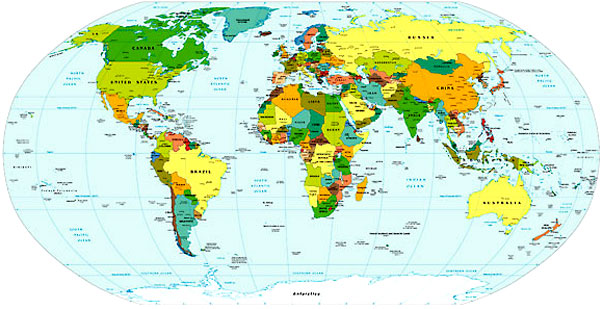 6 August, and we’re heading to Bolivia to celebrate their National Day, the anniversary of independence from Spain. The honouring of Simón Bolívar continues with the naming of this country. (Okay, the bright among you didn’t need to be told that, did you?) Bolivia? South American, one of the landlocked. I want to go there. Immensely. I’ve heard wonderful things about La Paz—when I was travelling in Central America I met a lot of people who were heading either north or south—just passing through Panama. I quizzed everyone heading up from South America. Oh, and Bolivia has two capitals—the constitutional and judicial capital is Sucre. The administrative capital is La Paz.
6 August, and we’re heading to Bolivia to celebrate their National Day, the anniversary of independence from Spain. The honouring of Simón Bolívar continues with the naming of this country. (Okay, the bright among you didn’t need to be told that, did you?) Bolivia? South American, one of the landlocked. I want to go there. Immensely. I’ve heard wonderful things about La Paz—when I was travelling in Central America I met a lot of people who were heading either north or south—just passing through Panama. I quizzed everyone heading up from South America. Oh, and Bolivia has two capitals—the constitutional and judicial capital is Sucre. The administrative capital is La Paz. When know about the Spanish in South America. They came, they saw, they conquered. Well, not absolutely everywhere, but you get the general idea. The conquest of Bolivia took place between 1524 and 1533—in nine years, to all intents and purposes, the deed was done. They called the area “Upper Peru.” They were pleased with the silver they could export to make money for the Spanish empire. Obviously they put the locals to work. Still, these days 55 percent of the population is Amerindian, and a further 30 percent is Mestizo. If only a lot of other countries retained this kind of indigenous population…
It took 16 years for independence to become a reality: from 1809 to 1825 the country was engaged in their War of Independence—this war, too, was named for Simón Bolívar. Oh, and revenue from silver started to go into the coffers of an independent Bolivia throughout the 19th century. In the 20th century their export of tin took over as the important industry.
 I feel like we sometimes forget the size of Bolivia—out of mind, out of…relative size. We all know Texas is pretty big, right? Well, Bolivia is about one and a half times the size of Texas. And it’s beautiful. The altiplano looks spectacular. There’s the Andes, the Amazonian rainforests, and Chaco. And let’s not—ever—forget Lake Titicaca, which is on the border between Bolivia and Peru.
I feel like we sometimes forget the size of Bolivia—out of mind, out of…relative size. We all know Texas is pretty big, right? Well, Bolivia is about one and a half times the size of Texas. And it’s beautiful. The altiplano looks spectacular. There’s the Andes, the Amazonian rainforests, and Chaco. And let’s not—ever—forget Lake Titicaca, which is on the border between Bolivia and Peru. We remember, too that Bolivia shares its border with Peru—sits just inland from Peru. It also borders Brazil, Argentina, Paraguay and Chile.
A poem? Don’t mind if I do. May I present “I Do Not Know” (I don’t, you know) by the poet Blanca Garnica. It was translated by Wayne H. Finke, and comes from Anthology of Contemporary Latin American Literature 1960-1984.
I Do Not Know
I do not know
from whence
I came to stop
in this autumn train,
the wing, tango
of the butterflies
and the path chews
the smile,
up the street,
from Monday to December.
How much this tour journey, unplanned,
weighs down!
But the complaint
withers
in the throat
and
ticket and stamp
go
from the arm already.
Ah, I do not know.
I do not know why
the soul
became a pupil
for the night
of tulips;
nor why I scratch
the ashy voice
of an absent guitar.
And, yet
I go on:
the ineffable face
of a cloud
keeps me company,
and at twelve noon
and twelve midnight
the rain
unfurls.
—Blanca Garnica
translated by Wayne H. Finke
from Anthology of Contemporary Latin American Literature 1960-1984


No comments:
Post a Comment